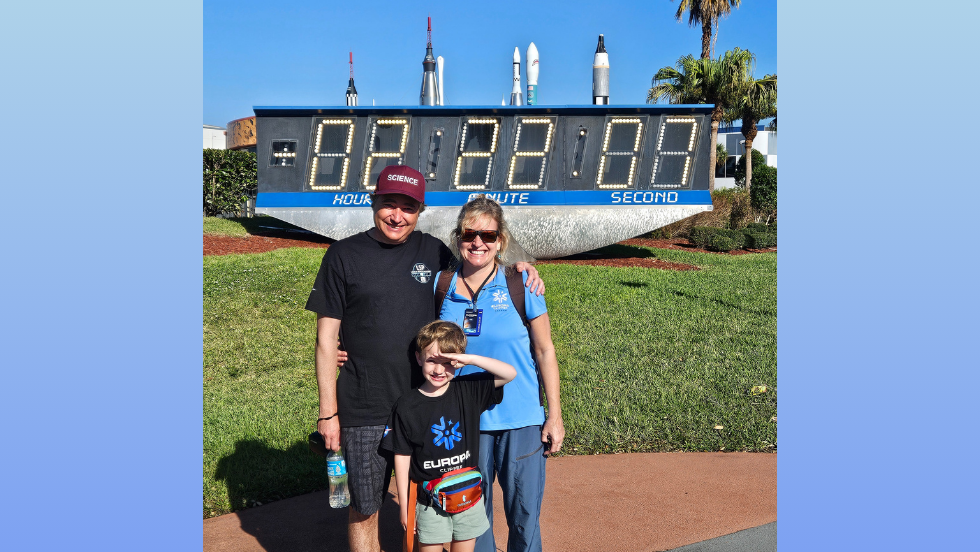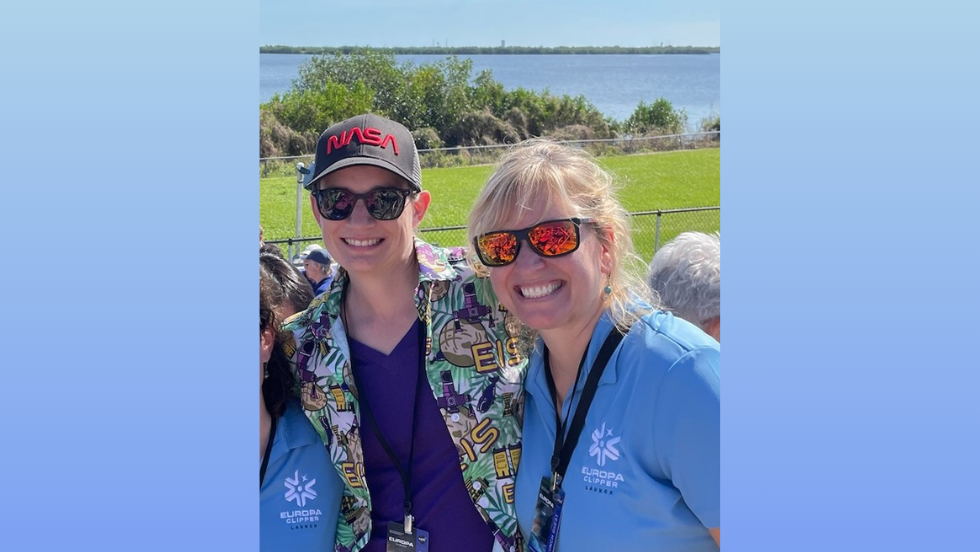The European Space Agency's Hera mission launched successfully on October 7th. Just a week later, the NASA flagship Europa Clipper successfully launched on its mission to explore Europa, Jupiter's ocean moon. These launches were made even more special by the presence of numerous DEEPS alumni, many of whom had key roles in these extraordinary missions.
The Hera mission to the Didymos binary asteroid system launched successfully from Kennedy Space Center, Florida, on October 7th. DEEPS Associate Professor (Research) Ingrid Daubar is a Participating Scientist on the mission, and attended the launch with her family, along with fellow Participating Scientist and DEEPS alumna Carolyn Ernst ScB ‘01, PhD ‘08. Other DEEPS alumni working on the Hera mission include Angela Stickle, PhD ‘12, and Olivier Barnouin, ScB ‘90, PhD ‘98.
On October 14th, Daubar and other members of the DEEPS community also attended the launch of NASA’s Europa Clipper mission. “Being able to witness the launches of both of these exciting missions was such a privilege,” said Daubar, “almost as much as being involved in the awesome science I know they're going to do. I can’t wait to see what surprises these missions uncover as we explore these alien worlds!”
Many DEEPS alumni were instrumental in bringing about the Europa Clipper mission, including:
- Duane Bindschadler, PhD 1990
- Geoffrey Collins, ScM 1996, PhD 2000
- Bethany Ehlmann, ScM 2008, PhD 2010
- Carolyn Ernst, ScB 2001, PhD 2008
- Rachel Klima, PhD 2008
- G. Wes Patterson, ScM 2004, PhD 2007
- Bob Pappalardo, Research Associate 1995-2001
- Louise Prockter, PhD 1999
- David Senske, PhD 1993
Daubar reflected on these contributions, saying, "Brown has a strong legacy when it comes to Europa – many of the mission's leaders got their start studying planetary science right here in the Lincoln Field building. As a relative newcomer, it's been great to feel connected through that shared history, both as scientists and as individuals."



